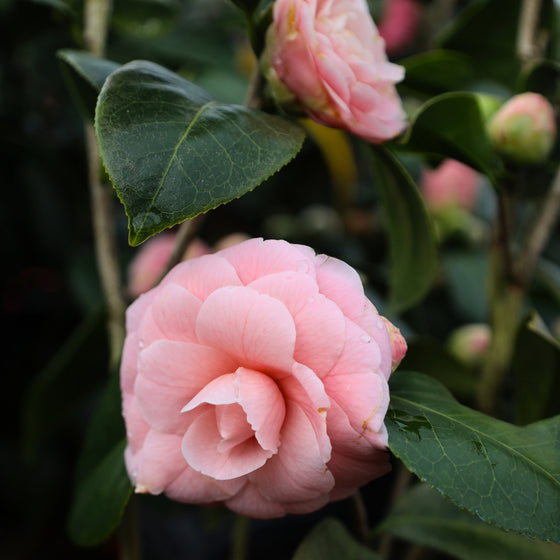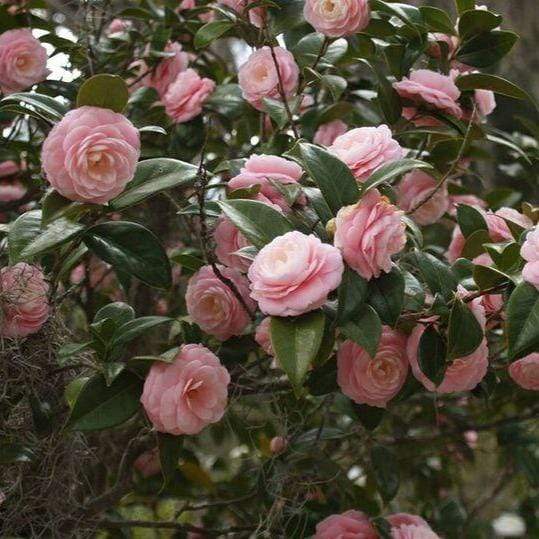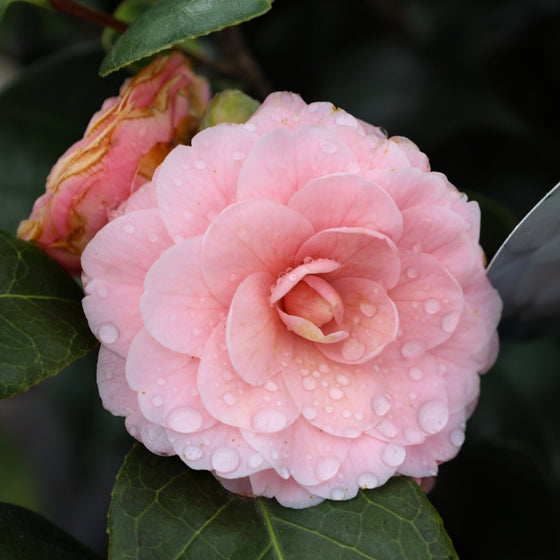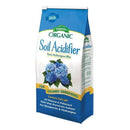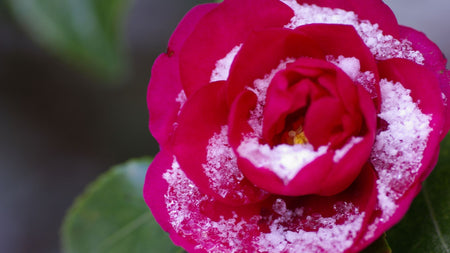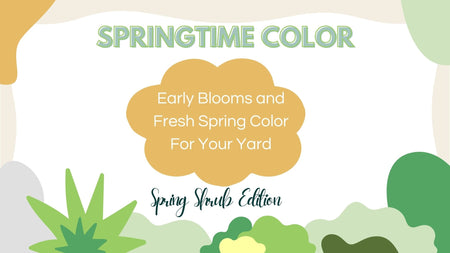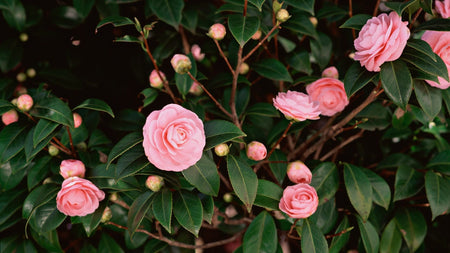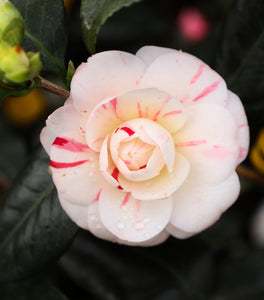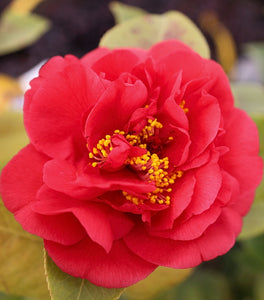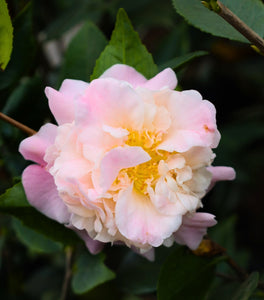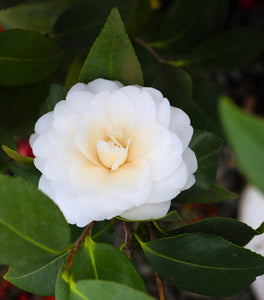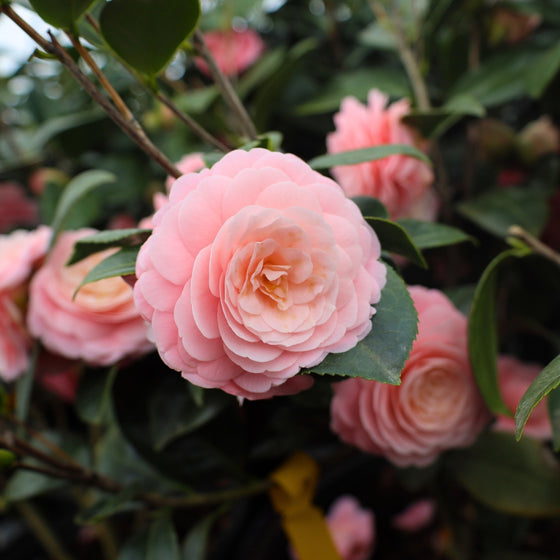
Images Depict Mature Plants
Pink Perfection Camellia Shrubs for Sale Online
Pink Perfection Camellia is a timeless, evergreen shrub celebrated for its classic, formal double blooms in soft pink that add a romantic touch to any garden. The exquisite flowers, with their perfectly arranged petals, bloom from late winter to early spring, offering a striking display when few other plants are in flower. The delicate, rose-like blooms are set against a backdrop of glossy, dark green leaves, providing a stunning contrast that enhances their beauty. Growing to a mature height of 6 to 8 feet and a spread of 4 to 6 feet, Pink Perfection Camellia is ideal for use as a specimen plant, an elegant hedge, or a lovely addition to mixed borders.
Pink Perfection Camellia thrives in partial shade and performs best in well-drained, slightly acidic soil that is enriched with organic matter. It is well-suited for areas that receive morning sun and afternoon shade, ensuring the blooms remain vibrant without the risk of sunburn. This low-maintenance shrub is also an excellent choice for creating year-round interest in the landscape, as its evergreen foliage stays lush even during the winter months. Pink Perfection is known for its slow to moderate growth rate, making it easy to maintain and shape without requiring frequent pruning. Its deer-resistant nature adds to its appeal, providing beautiful flowers and foliage in areas with wildlife.
Pink Perfection Camellia offers unmatched elegance and charm, whether used as a foundation planting, a privacy hedge, or a container plant. The lovely pink blooms make it an excellent cut flower, perfect for floral arrangements or simply enjoying indoors. When planted in groups, the camellias create a spectacular display, transforming the garden with soft color and refined form. With minimal care, including regular watering, mulching, and occasional feeding, Pink Perfection Camellia will reward gardeners with stunning blossoms and year-round greenery, enhancing any landscape with a touch of classic beauty and grace.
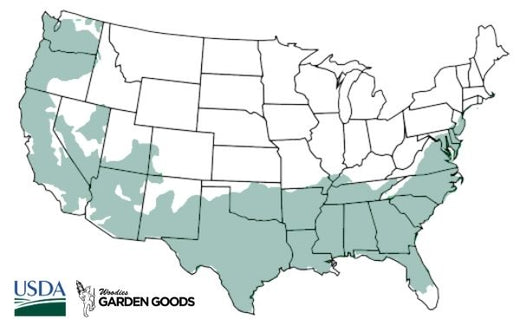
| Hardiness Zone: | 7-9 |
|---|---|
| Mature Height: | 8 to 10 Feet |
| Mature Width: | 4 to 6 Feet |
| Classification: | Broad leaved evergreen shrub, spring flowering |
| Sunlight: | Part sun to shade |
| Habit: | Evergreen, densely branched |
| Flower Color: | Pale pink flowers in very early spring |
| Foliage: | Dark green |
| Soil Condition: | Any well drained soil |
| Water Requirements: | Water well until established |
| Uses: | Extremely attractive when used as a focal point in the mixed border, mass planting, or a specimen planting. Provides unmatched winter interest due to its flowering in the late winter |
How to Care for Pink Perfection Camellia
Be sure to read our planting instructions to ensure a healthy and happy plant for years to come!
How do I Plant Pink Perfection Camellia Shrubs?
To plant Pink Perfection Camellia shrubs, start by selecting a location that receives partial shade, such as a spot with morning sun and afternoon shade, to protect the delicate blooms from harsh midday sun. The soil should be well-drained and slightly acidic, ideally enriched with organic matter like compost or peat moss to improve soil quality. Begin by digging a hole that is twice as wide as the root ball and about as deep, allowing the roots plenty of room to spread. Position the shrub in the hole so that the top of the root ball is slightly above ground level, which helps prevent root rot. Once positioned, backfill the hole with soil, gently firm it around the roots to eliminate air pockets, and water thoroughly to help the plant settle in. After planting your Pink Perfection Camellia, apply a 2-3 inch layer of mulch around the base to help retain moisture, regulate soil temperature, and suppress weed growth. Be careful to keep the mulch a few inches away from the trunk to prevent any moisture-related issues like rot. If planting multiple camellias for a hedge, space them 4 to 6 feet apart to give each plant room to grow while forming a dense, overlapping screen. During the first growing season, water the shrub regularly to keep the soil evenly moist, especially during dry periods, to support root establishment. With proper planting and care, Pink Perfection Camellia will thrive, offering stunning pink blooms and lush evergreen foliage that enhances the beauty of your garden.
How do I Water Pink Perfection Camellia Shrubs?
To water Pink Perfection Camellia shrubs, it's essential to maintain consistent moisture levels, especially during the first year after planting when the shrub is establishing its roots. Water deeply once or twice a week, depending on weather conditions, ensuring the root zone is thoroughly soaked. The best method is to use a slow, deep watering approach, such as with a soaker hose, which allows the water to penetrate deeply into the soil and encourages strong root growth. During hot or dry periods, you may need to increase the frequency of watering to prevent the soil from drying out completely, as Camellia Pink Perfection prefers moist but well-drained soil to thrive. Avoid overwatering, as waterlogged soil can lead to root rot and other issues. Once Pink Perfection Camellia is well-established, it becomes more tolerant of occasional dry spells, but it still benefits from regular watering, especially during extended heat or drought. To help retain moisture and regulate soil temperature, apply a 2-3 inch layer of organic mulch around the base of the shrub. Mulching not only reduces evaporation but also helps keep the roots cool and prevents weed growth. Make sure to keep the mulch a few inches away from the trunk to avoid issues with rot and to promote good air circulation. Consistent watering ensures that your Pink Perfection Camellia will grow vigorously, producing lush evergreen foliage and beautiful, soft pink blooms from late winter to early spring.
How do I fertilize Pink Perfection Camellia Shrubs?
To fertilize Pink Perfection Camellia shrubs, begin in early spring just before new growth starts. Use a balanced, slow-release acidic fertilizer specifically formulated for camellias, azaleas, or rhododendrons to provide essential nutrients for healthy growth and beautiful blooms. Spread the fertilizer evenly around the base of the shrub, extending out to the drip line, where the roots can easily absorb the nutrients. Be careful not to apply the fertilizer too close to the trunk, as this can lead to root burn. After fertilizing, water thoroughly to help the nutrients penetrate the soil and reach the roots effectively. This practice will promote lush foliage and the development of stunning, soft pink flowers. In addition to using a chemical fertilizer, adding organic matter like compost or well-rotted manure around your Pink Perfection Camellia can significantly improve soil structure and enhance nutrient availability. Spread a layer of organic matter around the base of the plant in spring, which will slowly release nutrients throughout the growing season and promote healthy root development. It's also important to monitor soil pH, as camellias thrive in slightly acidic conditions, ideally with a pH between 5.5 and 6.5. If needed, use sulfur to adjust the pH to create a favorable environment for nutrient uptake. Avoid over-fertilizing, as it may lead to excessive leafy growth at the expense of flowers. Proper fertilization ensures that your Pink Perfection Camellia will flourish, producing abundant blooms and lush evergreen foliage year after year.

How should I Prune my Pink Perfection Camellia Shrubs?
To prune your Pink Perfection Camellia shrubs, it is best to do so in late winter or early spring, just after the flowering season ends. This timing ensures that you won’t accidentally remove any flower buds, allowing the shrub to produce a full bloom the following year. Begin by removing any dead, damaged, or diseased branches to improve the overall health of the plant. You can also thin out crowded branches to improve air circulation and light penetration, which helps prevent fungal diseases. Use clean, sharp pruning shears to make precise cuts, as this reduces plant stress and promotes faster healing. For shaping your Pink Perfection Camellia, prune the longer branches to create a balanced, bushy appearance while preserving its natural form. Avoid shearing the plant, as this can result in an unnatural, boxy look and may reduce flowering. Instead, make selective cuts at different heights to encourage new growth from within, resulting in a fuller, more attractive shrub. Light pruning throughout the growing season can also help maintain the size and shape of the camellia, especially if you are using it as part of a hedge or border. Proper pruning will keep your Pink Perfection Camellia healthy and well-shaped, enhancing its ability to produce abundant, soft pink blooms and lush evergreen foliage that will be the highlight of your garden.

